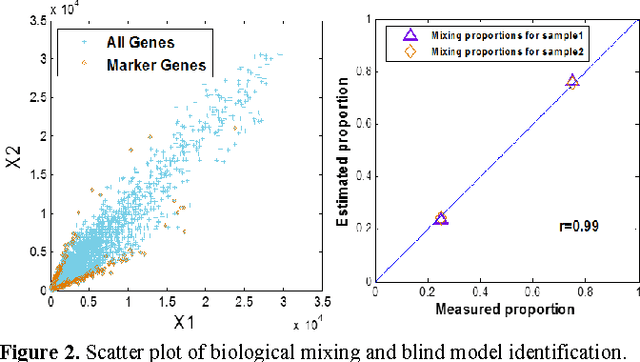Jianhua Xuan
Tracking Multiple Moving Objects Using Unscented Kalman Filtering Techniques
Feb 05, 2018



Abstract:It is an important task to reliably detect and track multiple moving objects for video surveillance and monitoring. However, when occlusion occurs in nonlinear motion scenarios, many existing methods often fail to continuously track multiple moving objects of interest. In this paper we propose an effective approach for detection and tracking of multiple moving objects with occlusion. Moving targets are initially detected using a simple yet efficient block matching technique, providing rough location information for multiple object tracking. More accurate location information is then estimated for each moving object by a nonlinear tracking algorithm. Considering the ambiguity caused by the occlusion among multiple moving objects, we apply an unscented Kalman filtering (UKF) technique for reliable object detection and tracking. Different from conventional Kalman filtering (KF), which cannot achieve the optimal estimation in nonlinear tracking scenarios, UKF can be used to track both linear and nonlinear motions due to the unscented transform. Further, it estimates the velocity information for each object to assist to the object detection algorithm, effectively delineating multiple moving objects of occlusion. The experimental results demonstrate that the proposed method can correctly detect and track multiple moving objects with nonlinear motion patterns and occlusions.
A feasible roadmap for developing volumetric probability atlas of localized prostate cancer
Sep 15, 2014



Abstract:A statistical volumetric model, showing the probability map of localized prostate cancer within the host anatomical structure, has been developed from 90 optically-imaged surgical specimens. This master model permits an accurate characterization of prostate cancer distribution patterns and an atlas-informed biopsy sampling strategy. The model is constructed by mapping individual prostate models onto a site model, together with localized tumors. An accurate multi-object non-rigid warping scheme is developed based on a mixture of principal-axis registrations. We report our evaluation and pilot studies on the effectiveness of the method and its application to optimizing needle biopsy strategies.
A feasible roadmap for unsupervised deconvolution of two-source mixed gene expressions
Oct 25, 2013



Abstract:Tissue heterogeneity is a major confounding factor in studying individual populations that cannot be resolved directly by global profiling. Experimental solutions to mitigate tissue heterogeneity are expensive, time consuming, inapplicable to existing data, and may alter the original gene expression patterns. Here we ask whether it is possible to deconvolute two-source mixed expressions (estimating both proportions and cell-specific profiles) from two or more heterogeneous samples without requiring any prior knowledge. Supported by a well-grounded mathematical framework, we argue that both constituent proportions and cell-specific expressions can be estimated in a completely unsupervised mode when cell-specific marker genes exist, which do not have to be known a priori, for each of constituent cell types. We demonstrate the performance of unsupervised deconvolution on both simulation and real gene expression data, together with perspective discussions.
 Add to Chrome
Add to Chrome Add to Firefox
Add to Firefox Add to Edge
Add to Edge